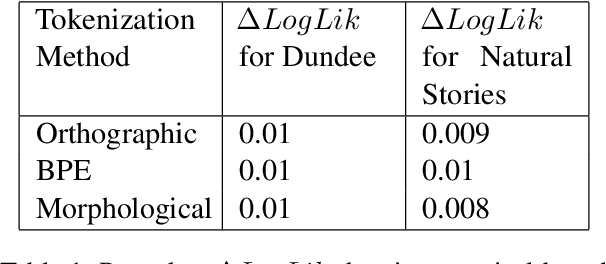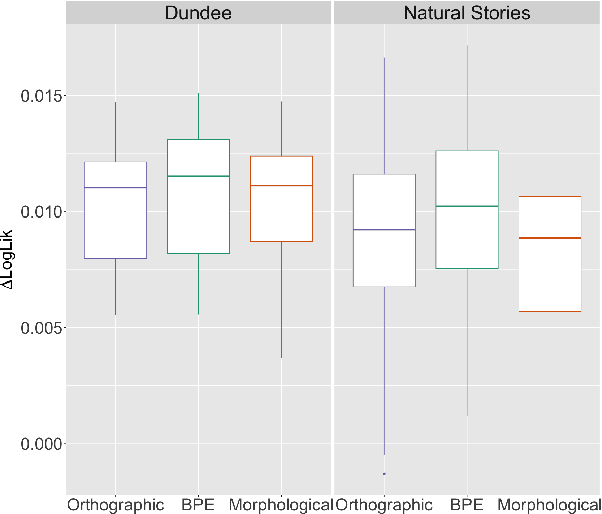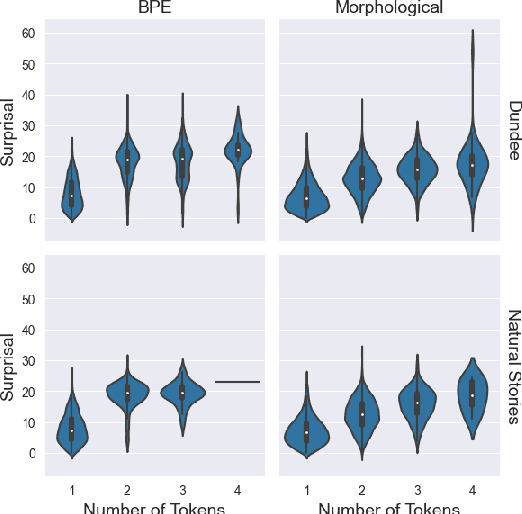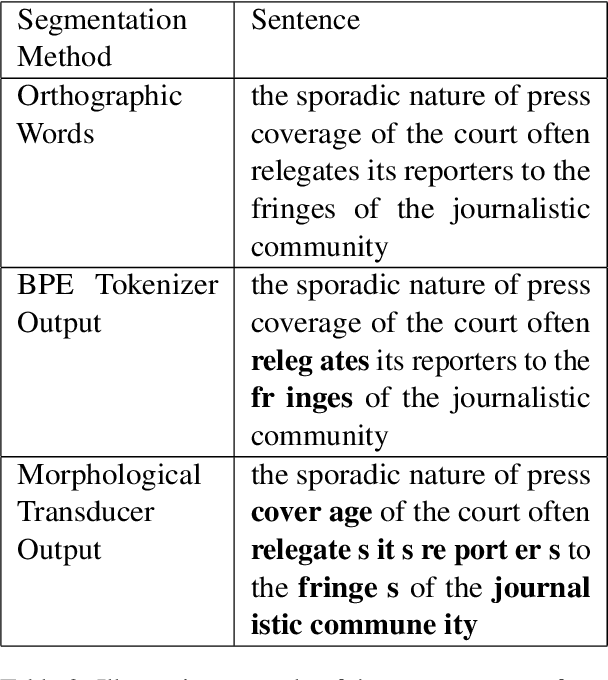Words, Subwords, and Morphemes: What Really Matters in the Surprisal-Reading Time Relationship?
Paper and Code
Oct 26, 2023



An important assumption that comes with using LLMs on psycholinguistic data has gone unverified. LLM-based predictions are based on subword tokenization, not decomposition of words into morphemes. Does that matter? We carefully test this by comparing surprisal estimates using orthographic, morphological, and BPE tokenization against reading time data. Our results replicate previous findings and provide evidence that in the aggregate, predictions using BPE tokenization do not suffer relative to morphological and orthographic segmentation. However, a finer-grained analysis points to potential issues with relying on BPE-based tokenization, as well as providing promising results involving morphologically-aware surprisal estimates and suggesting a new method for evaluating morphological prediction.
 Add to Chrome
Add to Chrome Add to Firefox
Add to Firefox Add to Edge
Add to Edge